The 1939 Jefferson nickel’s value depends on mint mark, condition, and errors. Philadelphia nickels (no mint mark) are most common, worth under $1 circulated but up to $1,250 in MS-68. Denver “D” nickels are rarest (3.5M mintage), valued $3-$40 circulated and up to $1,500 uncirculated. San Francisco “S” nickels fall between, worth $0.45-$11 circulated and $18-$250+ uncirculated. Valuable errors include the “Double Monticello” doubled die reverse ($60+ circulated), “Black Beauty” improperly annealed planchet ($65-$75), repunched mint marks ($20-$75), and off-center strikes ($10-$100+). Check mint marks on the reverse near Monticello, assess condition for wear, inspect for errors, and consider professional grading through PCGS or NGC for accurate valuation.
That worn nickel from 1939 sitting in your drawer might be worth more than five cents—potentially hundreds or even thousands of dollars. The Jefferson nickel’s inaugural year produced some fascinating varieties and errors that collectors actively seek today. Understanding what separates a common piece from a valuable treasure requires knowing exactly where to look and what makes certain specimens command premium prices.
Understanding the Three Mint Varieties and Their Market Values
The 1939 Jefferson nickel marked the beginning of a design that would become one of America’s most enduring coin series. Three different U.S. Mint facilities produced these coins, each creating distinct collectible categories with dramatically different values.
Philadelphia struck over 120 million nickels without any mint mark. These represent the most common variety, making them readily available but still valuable in top condition. A typical worn example trades for under one dollar, but the value spectrum changes dramatically as condition improves. A Mint State 60 (MS-60) specimen—showing no circulation wear but possessing average luster and contact marks—sells for approximately $2.65. The real excitement begins at higher grades: MS-65 examples command around $35, while pristine MS-67 coins bring $450 to $650. The absolute finest MS-68 specimens have sold for over $1,250 at major auctions.
The Denver Mint produced only 3.5 million nickels in 1939, identifiable by a small “D” to the right of Monticello on the reverse. This limited production creates significant scarcity. Even heavily circulated examples in Good-4 condition hold $3 in value, while Fine-12 specimens bring $8 to $12. Extra Fine-40 examples sell for $25 to $40. Uncirculated Denver nickels start at $45 for MS-60 grade and escalate rapidly—MS-65 specimens fetch $225 to $350, MS-67 examples reach $800 to $1,200, and the rare MS-68 coins have exceeded $1,500 at Heritage Auctions sales.
San Francisco contributed 6.6 million nickels marked with an “S” mint mark. These fall between Philadelphia and Denver in both rarity and value. Circulated examples range from $0.45 in Good-4 to $3.50 in Fine-12, and $8 to $11 in Extra Fine-40. Uncirculated San Francisco nickels begin at $18 for MS-60, climb to $85 for MS-65, and reach $250 or more for MS-67 specimens.
1939 Nickel Value Quick Reference Table:
| Grade | Philadelphia (No Mark) | Denver (D) | San Francisco (S) |
|---|---|---|---|
| Good-4 | $0.25 | $3.00 | $0.45 |
| Fine-12 | $0.50 | $8.00 | $1.50 |
| EF-40 | $1.00 | $25.00 | $5.00 |
| MS-60 | $2.65 | $45.00 | $18.00 |
| MS-65 | $35.00 | $275.00 | $85.00 |
| MS-67 | $550.00 | $1,000.00 | $250.00 |
The Famous Doubled Die Reverse: The “Double Monticello” Error
The 1939 Doubled Die Reverse represents the most sought-after error variety for this year. This striking mistake occurred when the die used to stamp coins received two slightly offset impressions during its production, creating visible doubling on the finished coins.
Examining your nickel’s reverse side reveals this error most prominently on the word “MONTICELLO” and “FIVE CENTS.” The letters appear with clear shadow-like duplicates, particularly noticeable on the “MONTICELLO” inscription above Thomas Jefferson’s home. The columns of Monticello itself may also show slight doubling. A 10x magnifying loupe makes these details clearly visible, though strong examples show doubling to the naked eye.
Circulated Doubled Die Reverse nickels start at $60 to $75 in Good condition, climbing to $125 for Fine specimens and $200 to $250 for Extra Fine examples. Uncirculated examples rarely appear on the market—when they do, prices range from $400 for MS-60 to over $1,500 for MS-65 or higher grades. A PCGS-certified MS-66 example sold for $2,350 at a 2022 Heritage Auctions event, demonstrating the premium collectors place on high-grade error coins.
The “Black Beauty” Nickel: Improperly Annealed Planchet Error
Among the most visually distinctive errors, the improperly annealed planchet nickel earned the nickname “Black Beauty” for its unusual dark appearance. During normal production, blank coin discs (planchets) undergo controlled heating and cooling (annealing) to soften the metal for striking. When this process malfunctions, the metal develops a dark bluish-black or charcoal color instead of the typical silver-gray finish.
These dramatic-looking coins immediately stand out in any collection. The discoloration affects the entire surface uniformly, distinguishing it from environmental damage or artificial toning. The metal composition remains unchanged—only the surface appearance differs.
Examples in Good to Fine condition sell for $65 to $75, while Very Fine specimens command $90 to $110. Extra Fine examples bring $125 to $150. Uncirculated Black Beauty nickels are exceptionally rare, with MS-60 to MS-63 examples selling for $250 to $400 when they appear at auction. The visual drama combined with genuine mint error status makes these coins popular with both error specialists and general collectors.
Additional Collectible Error Varieties Worth Finding
Beyond the major errors, several other varieties add value to 1939 nickels. Understanding these helps you evaluate every coin you encounter.
Repunched Mint Mark (RPM): Mint employees sometimes struck the punch holding the mint mark at a slightly wrong position, then corrected it with a second strike. This creates a doubled or offset appearance to the “D” or “S” mint mark. Strong repunched mint marks on 1939 nickels sell for $20 to $35 in circulated condition and $75 to $150 uncirculated. The most dramatic examples, showing clear separation between the two impressions, command the highest premiums.
Off-Center Strikes: When a planchet feeds incorrectly into the press, the dies strike only part of the coin, leaving a blank crescent on one side. The value depends on the misalignment percentage and whether the date remains visible. A 5-10% off-center strike with full date sells for $10 to $20. A 25-35% off-center example brings $35 to $60. Dramatic 50% or greater off-center strikes with visible dates command $100 to $200 or more. Without a visible date, values drop by approximately 60-70%.
Struck Through Grease or Filled Die: When grease or debris fills die recesses, portions of the design strike weakly or disappear entirely. Minor examples add $5 to $15 in value. Dramatic strikes showing significant missing detail on Jefferson’s portrait or Monticello sell for $25 to $75 depending on the extent and visual impact.
Special Proof Varieties: The 1939 Reverse and 1940 Reverse Types
The Philadelphia Mint produced approximately 12,535 proof nickels in 1939 for collectors. These feature mirror-like fields and frosted design elements, created using specially polished dies and multiple strikes.
Most 1939 proofs display the standard 1939 reverse design. These sell for $115 to $140 in Proof-63 condition, $165 to $195 for Proof-65, and $325 to $450 for Proof-67 specimens.
A small number of 1939 proofs were accidentally struck with the modified 1940 reverse die, which features subtle differences in lettering size and placement. This variety, known as the “1939 Proof with 1940 Reverse,” commands a 15-20% premium over standard proofs: $130 to $160 for Proof-63, $190 to $225 for Proof-65, and $375 to $525 for Proof-67 grades.
Properly Identifying Mint Marks and Grading Your Coin
Accurate identification determines whether you hold a $0.25 coin or a $1,500 treasure. Start by examining the reverse (tails side) to the right of Monticello’s image, just above the building’s base. Look for a small letter using natural light and a magnifying glass:
- No letter present: Philadelphia Mint
- Small “D”: Denver Mint
- Small “S”: San Francisco Mint
Mint marks measure only 1-2 millimeters, so close examination proves essential. Dirt or corrosion sometimes obscures them—gently cleaning with water and a soft cloth may reveal hidden marks.
Condition assessment requires understanding the grading scale. Circulated grades describe wear levels: Good-4 shows heavy wear with major design elements visible but flat; Fine-12 displays moderate wear with all major features clear; Extra Fine-40 exhibits light wear on only the highest points; About Uncirculated-50 shows slight friction on the highest points but retains most original luster.
Uncirculated (Mint State) coins show zero wear from circulation. MS-60 has numerous bag marks and average luster. MS-63 displays moderate marks with good luster. MS-65 shows only minor marks invisible without magnification and strong luster. MS-67 exhibits exceptional eye appeal with virtually no imperfections and blazing luster. MS-68 represents near-perfection, with no distracting marks visible even under magnification.
For coins potentially worth over $100, professional grading by PCGS or NGC provides authentication and market credibility. Grading fees range from $20 to $65 depending on service level and coin value. The investment proves worthwhile for high-grade examples or error varieties, as certified coins typically sell for 20-40% more than raw (uncertified) equivalents.
Where to Sell Your Valuable 1939 Nickel
After identifying a valuable specimen, choosing the right selling venue maximizes your return. Local coin dealers offer immediate payment but typically pay 50-70% of retail value to cover their overhead and profit margin. This option works well for common circulated coins under $50 in value.
Online marketplaces like eBay provide access to collectors nationwide. Successful sales require clear photographs showing both sides, the mint mark area, and any errors. Completed listings for similar coins establish realistic pricing. Expect to net 85-90% of the final price after fees and shipping costs. This route suits coins valued at $50 to $500.
Major auction houses like Heritage Auctions, Stack’s Bowers, and Great Collections specialize in certified coins worth $500 or more. They charge 10-20% consignment fees but expose your coin to serious collectors willing to pay premium prices. Record-setting sales typically occur through these venues. A 1939-D MS-68 sold for $1,680 through Heritage in 2023, demonstrating the strong market for top-grade examples.
Coin shows provide opportunities to compare offers from multiple dealers in one location. Bringing your coin—especially if already certified—allows you to negotiate face-to-face and leave with cash. This hybrid approach combines the convenience of local sales with competitive pricing from dealer competition.
Building Your Jefferson Nickel Collection Starting With 1939
The 1939 nickel offers an accessible entry point into Jefferson nickel collecting. Complete date-and-mint-mark sets from 1938 to present provide an achievable long-term goal, with most dates available in circulated condition for under $5 each. The 1939 varieties add challenge and excitement to this pursuit.
Start by acquiring one example from each mint: Philadelphia (no mark), Denver (D), and San Francisco (S) in affordable circulated grades. This three-coin set costs $5 to $15 total and represents all major varieties. Then consider upgrading to uncirculated examples or seeking error varieties as your knowledge and budget grow.
Searching through rolls of modern nickels occasionally yields older dates returned to circulation, though 1939 examples rarely appear this way. Estate sales, antique shops, and coin shows provide more productive hunting grounds. Many collectors inherited coins without knowing their value—these opportunities reward the educated buyer.
Your 1939 nickel connects you to the first year of a design that has served America for over 85 years, commemorating one of the nation’s most influential founders and his architectural masterpiece. Whether you’ve discovered a common Philadelphia example or a rare Denver Mint gem, you’re holding a tangible piece of American numismatic history with a story worth preserving.
You may be interested:
- 1859 Indian Head Penny Coin Value Complete Errors List And No Mint Mark Worth Guide For Collectors
- 1911 V Nickel Coin Value Guide Complete Errors List And No Mint Mark Worth Today
- 1902 Dime Coin Value Complete Errors List With O S And No Mint Mark Worth Guide
- 1788 Quarter Coin Value Complete Guide Errors List And D S P Mint Mark Worth Revealed
- 1776 To 1976 Bicentennial Half Dollar Coin Value Complete Errors List And What Your D S And No Mint Mark Coins Are Actually Worth
- 1990 Penny Coin Value Errors List How D S And No Mint Mark Pennies Are Worth Thousands Of Dollars

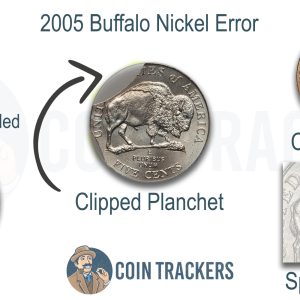
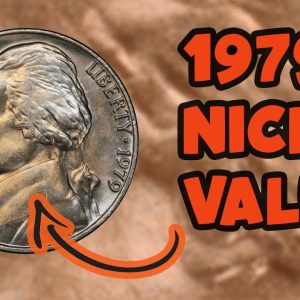
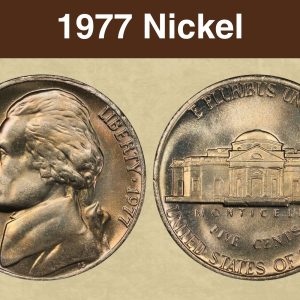
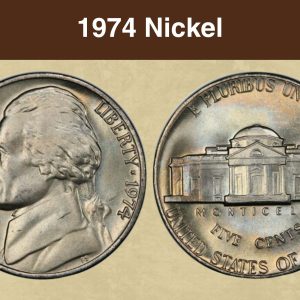
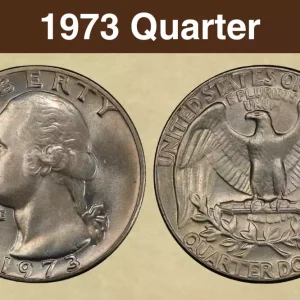
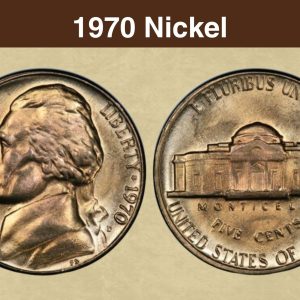
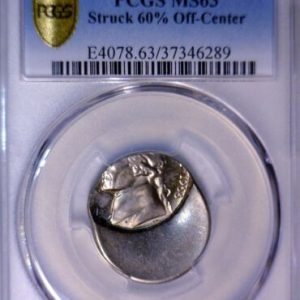
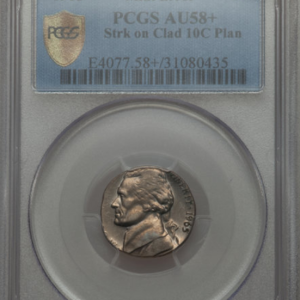
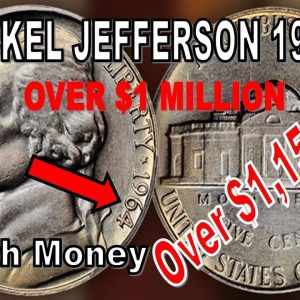
Is a 1939 nickel with no mint mark worth anything?
A 1939 no-mint mark nickel is worth about $0.25 to $1.50 in good condition, but can be worth much more if it’s in uncirculated condition ($8 to $15 or higher). The value depends heavily on its condition, with worn coins having lower value than those that look new. A 1939 nickel without a mint mark was produced at the Philadelphia mint and is a common coin from the second year of the Jefferson nickel series.
What nickel error to look for?
Key nickel errors to look for include doubled dies, where design elements are doubled due to die strikes, off-center strikes, where the coin is struck outside its intended position, and mint mark errors, such as doubled or missing mint marks. Other valuable errors are speared bison on 2005 nickels, the 1943 double die Jefferson nickel, and 1937-D Buffalo nickel three legs.
What makes a 1939 nickel special?
This is selling for 20,000 because it’s got that doubling. And it’s in very very good condition with that high grade. Now 1939. They did make around 3.5 million of the D mintm mark.
Where’s the mint mark on a 1939 Jefferson Nickel?
By GovMint : In 1938 the Jefferson Nickel was introduced. The mint mark on the nickel composition coins from 1938 until 1964 appeared immediately to the right of Monticello, near the rim on the reverse of the coin. In 1968 the mint mark was placed on the obverse of the coin.